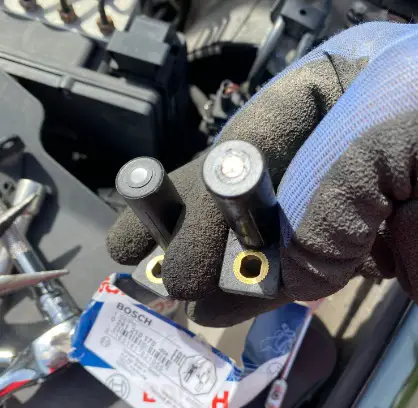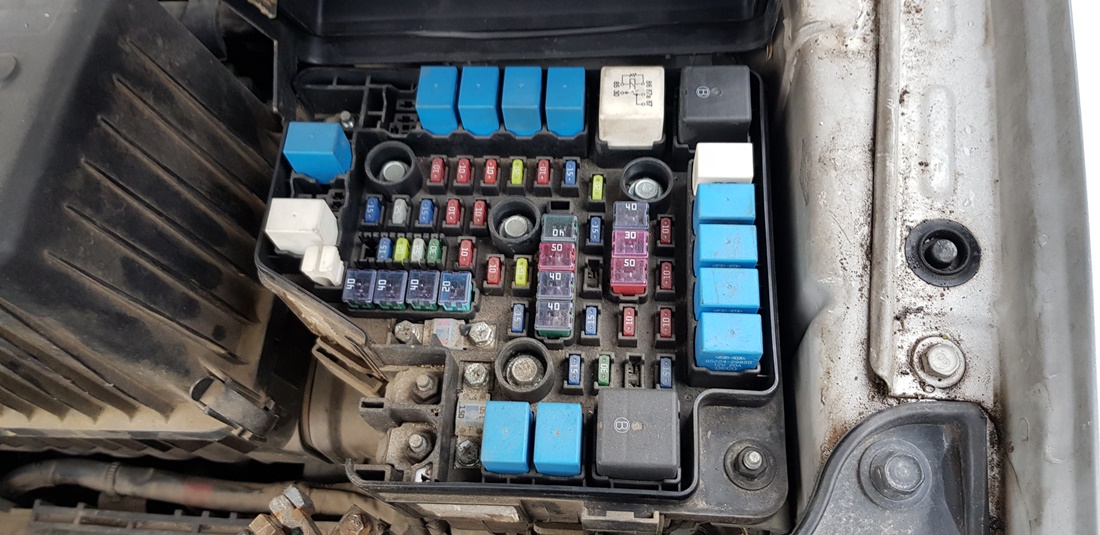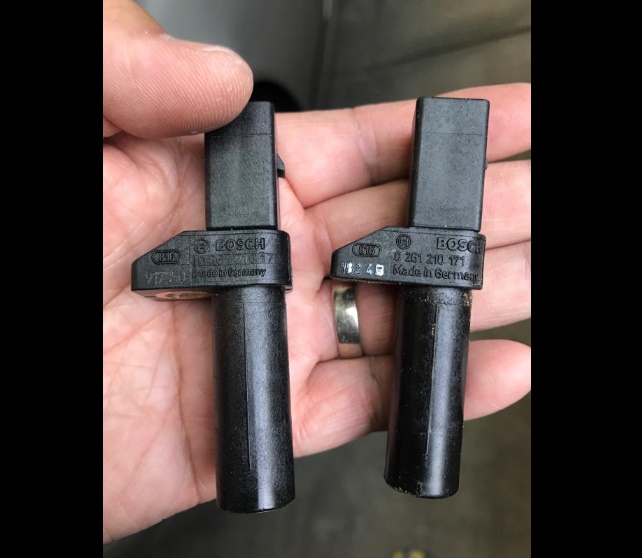A blown head gasket can be a big headache. It is not the price of the head gasket itself, it is the labor cost that scares many car owners. In order to get to the head gasket, the mechanic has to remove a lot of components, including tearing up the engine itself.
Many car owners ask themself what causes this. Can low oil cause a blown head gasket? Or is it something else?
In this blog post, I am going to talk about whether or not low oil can cause a blown head gasket.
- Key Takeaway
- Can Low Oil Cause a Blown Head Gasket?
- How Do You Temporarily Fix a Head Gasket?
- Why Do Engines Lose Oil
- How To Prevent a Blown Head Gasket
- FAQs
- Q: What is a blown head gasket?
- Q: What are the symptoms of a blown head gasket?
- Q: How do I know if I have a blown head gasket?
- Q: Can a blown head gasket cause engine damage?
- Q: How much does it cost to repair a blown head gasket?
- Q: Can I drive with a blown head gasket?
- Q: Is it possible to prevent a blown head gasket?
- Q: Can a blown head gasket be fixed without removing the engine?
- In Conclusion
Key Takeaway
- Low oil can cause a blown head gasket due to engine overheating. The engine requires engine oil to lubricate the moving parts and to remove heat.
- Temporarily fixing a head gasket can be done by using a product like a sealant or engine block sealer, which are poured into the radiator and can seal most cracks and gaps, although they’re not considered a permanent solution.
Can Low Oil Cause a Blown Head Gasket?

Yes, low oil can cause a blown head gasket due to engine overheating, as the engine requires sufficient oil to lubricate its moving parts and remove heat.
Engine oil is used to reduce friction between the moving parts of the engine and to dissipate heat. The oil pump circulates the engine oil through oil galleries around the engine.
The oil lubricates and takes the heat from the constantly moving parts of the engine and then gets cooled by an oil cooler. Oil is not the only thing that cools the engine, but it is the only component that lubricates the moving parts of the engine, thus reducing friction.
Fans and coolants are also used to cool down the engine. However, those two are not enough to keep the engine at optimal working temperature. If the engine oil is low, the friction of the moving parts is increased, therefore the temperature within the engine is higher than normal.
In short, if there is no oil to take away the heat from moving parts of the engine, the engine will overheat. When the engine overheats, the cylinder heat swells up and blows the head gasket.
Head gaskets are used to prevent oil and coolant from leaking into the combustion chamber and are located where the cylinder head and body join. Head gaskets can fail for a variety of reasons, but an overheated engine is the most common.
How Do You Temporarily Fix a Head Gasket?

- Make sure the vehicle has enough fuel to run for thirty minutes.
- Pour 24 oz of head gasket repair liquid into the radiator.
- Start your vehicle and let it run for fifteen minutes.
- Turn off the vehicle and top off the coolant.
- Drive the vehicle for about fifteen minutes.
Changing a blown head gasket can cost thousands of dollars. If your vehicle is older and is worth less than a thousand dollars, there is no point in spending that much money on replacing a blown head gasket.
In that case, you can go ahead and try to temporarily fix your blown head gasket by using a blown gasket seal repair kit. A blown head gasket doesn’t mean that you need a new engine. You can try and temporarily fix the blown head gasket.
I got this head gasket seal on amazon.com. Here is what you have to do after you order the head gasket repair kit:
1. Prepare your vehicle
Before you start this task, make sure that your vehicle has enough fuel to run for at least thirty minutes. Then, go ahead and park the vehicle on leveled ground. The head gasket repair liquid needs to be poured on a cold engine. So, if your engine is hot, make sure to wait for it to cool down.
2. Pour the liquid into the radiator
The head gasket repair liquid weighs 24 OZ. So, before you pour the liquid, you have to make sure that there is enough space in the radiator.
You can use a turkey baster to remove some of the coolant from the radiator. Shake the bottle well before you pour. Then, go ahead and pour all of the liquid into the radiator or the reservoir/overflow tank.
3. Start your vehicle
Start your vehicle and turn the heater on hot and the fan on high speed. You need to run the vehicle for about fifteen to twenty minutes in order to reach the optimal working temperature.
At this temperature, the thermostat will open and the coolant along with the head gasket repair liquid will start to flow and reach the blown head gasket.
4. Turn off your vehicle
Turn off your vehicle and let it cool down. This may take up to thirty minutes. When the engine has cooled down, top of the radiator and the reservoir/overflow tank with coolant. There will be a lack of coolant in the cooling system because you had to remove 24 OZ in order to add the repair liquid. Plus, that liquid is now sealed on the head gasket and is no longer circulating in the cooling system.
5. Drive for about fifteen minutes
With the coolant topped off, you can either drive your vehicle for about fifteen minutes or let it idle for about twenty minutes. At this point, your head gasket should be temporarily fixed. It might not work for your vehicle, but it is definitely worth trying says Axle Addict.
Why Do Engines Lose Oil

Engines can lose oil due to several reasons:
- Engine Wear: Over time, engine parts wear down, creating gaps where oil can escape.
- Leaks: Damaged seals or gaskets can cause oil to leak out of the engine.
- Burning Oil: If the engine is running too hot, oil can be burned off.
- Poor Quality Oil: Low-grade or incorrect oil may not lubricate properly and can evaporate or break down faster.
- Overfilling: Too much oil in the engine can lead to oil foaming and subsequent loss.
- Faulty PCV Valve: A malfunctioning Positive Crankcase Ventilation (PCV) valve can cause oil to be sucked into the intake manifold.
- Age and Mileage: Older engines with high mileage tend to lose oil more than newer ones.
Oil is the lifeblood of any engine. If an engine runs without oil, it will be destroyed in seconds. That is why it is important to check your oil levels in between oil changes.
Car owners that use synthetic oil with longer changing intervals have to especially pay attention because the vehicle can use all of the oil before the next change.
So, what causes an engine to use oil?
1. Engine leaking oil externally

The engine oil has additives that keep the seals and gaskets in the engine soft and pliable so they don’t shrink and get hard. However, if the oil is left in the engine longer than what it’s rated for, the seals and gaskets can shrink and become hard.
At this point, you will be dealing with an external leak. You might see an oil leak on the valve cover, timing chain cover, oil pan cover, and sometimes on an oil drain plug.
The engine components that are exposed to high pressure at especially at risk. This includes oil pressure sensors, oil filters, crankshaft seals, and even head gaskets. So, if your engine is dripping oil or you find oil stains on the pavement underneath your vehicle, it is more than likely coming from one of the above-mentioned parts.
2. Engine is consuming oil internally

The engine can start consuming oil internally when the piston rings get worn out and allow oil to enter the combustion chamber and be burned. This is why it’s important to regularly clean or change your air filter. A dirty air filter will cause premature wear on the piston rings by allowing fine particles of dirt to enter the combustion chamber.
Another cause of internal engine oil consumption is worn valve stems and worn hardened valve stem seals. They also allow oil to enter the combustion chamber and be burned.
Consuming enough engine oil on the inside of the engine can cause the catalytic converter to wear out prematurely. This is due to a rise in temperature from the oil being vaporized by the catalytic converter.
If you see blue-colored smoke coming out of the tailpipe when you first start your vehicle, there is a great chance that the oil is being consumed internally.
Once the engine oil goes beyond its rated service life(six to twelve months), it will be depleted of the additives put into the oil. The oil breakds down and can also cause oil loss.
How To Prevent a Blown Head Gasket
Preventing a blown head gasket can be achieved through the following measures:
- Regular Maintenance: Keep up with regular oil and coolant changes to ensure your engine is properly lubricated and cooled.
- Use Quality Coolants: High-quality coolants help prevent overheating, which can lead to a blown head gasket.
- Monitor Engine Temperature: Regularly check your temperature gauge while driving and stop if it gets too high.
- Regularly Check for Leaks: Inspect your vehicle for coolant or oil leaks regularly.
- Avoid Overloading Your Vehicle: Overloading puts extra stress on the engine, which can cause overheating.
- Use the Correct Grade of Oil: Using the right type of oil for your engine can help maintain its health.
- Regular Inspections: Regular engine inspections can help catch potential issues early before they escalate to a blown head gasket.
- Avoid Aggressive Driving: Rapid acceleration and hard braking can put unnecessary stress on the engine.
- Warm Up Your Car: Especially in colder weather, let your car warm up before driving to avoid sudden temperature changes in the engine.
FAQs
Q: What is a blown head gasket?
A: A blown head gasket refers to a situation where the gasket that seals the cylinder head to the engine block becomes damaged and fails to seal properly. This can result in leakage of coolant or oil into the cylinders or from the cylinders to the surrounding areas.
Q: What are the symptoms of a blown head gasket?
A: Some common symptoms of a blown head gasket include overheating of the engine, white or grayish smoke from the exhaust, coolant leakage, engine misfires, and oil mixing with coolant or vice versa.
Q: How do I know if I have a blown head gasket?
A: There are several ways to diagnose a blown head gasket. These include performing a compression test, checking for coolant or oil leaks, inspecting the spark plugs for signs of coolant or oil contamination, and monitoring the engine temperature and performance.
Q: Can a blown head gasket cause engine damage?
A: Yes, a blown head gasket can cause severe engine damage if left unattended. It can lead to overheating, coolant or oil contamination, loss of compression, and potential damage to other engine components.
Q: How much does it cost to repair a blown head gasket?
A: The cost of repairing a blown head gasket can vary depending on factors such as the make and model of the vehicle, the extent of the damage, and labor costs in your area. On average, a head gasket repair can cost anywhere from $1,000 to $2,500.
Q: Can I drive with a blown head gasket?
A: It is not recommended to drive a vehicle with a blown head gasket. Continuing to drive with a blown head gasket can cause further damage to the engine and lead to more expensive repairs.
Q: Is it possible to prevent a blown head gasket?
A: While it is not always possible to prevent a blown head gasket, proper maintenance of the vehicle can help reduce the risk. Regularly checking the coolant and oil levels, performing scheduled maintenance, and addressing any cooling system issues promptly can help prevent head gasket failure.
Q: Can a blown head gasket be fixed without removing the engine?
A: In some cases, it is possible to repair a blown head gasket without removing the engine. This is known as a “top-end” repair. However, whether or not this is possible depends on the specific engine and the extent of the damage.
Q: How long does it take to replace a blown head gasket?
A: The time required to replace a blown head gasket can vary depending on factors such as the make and model of the vehicle, the accessibility of the gasket, and the skill level of the technician. On average, the repair can take anywhere from a few hours to a couple of days.
In Conclusion
It’s clear that low oil can indeed contribute to a blown head gasket. This is primarily due to the fact that an engine requires sufficient oil to lubricate its moving parts and remove heat.
If the oil level is too low, the engine may overheat and cause the head gasket to fail.




